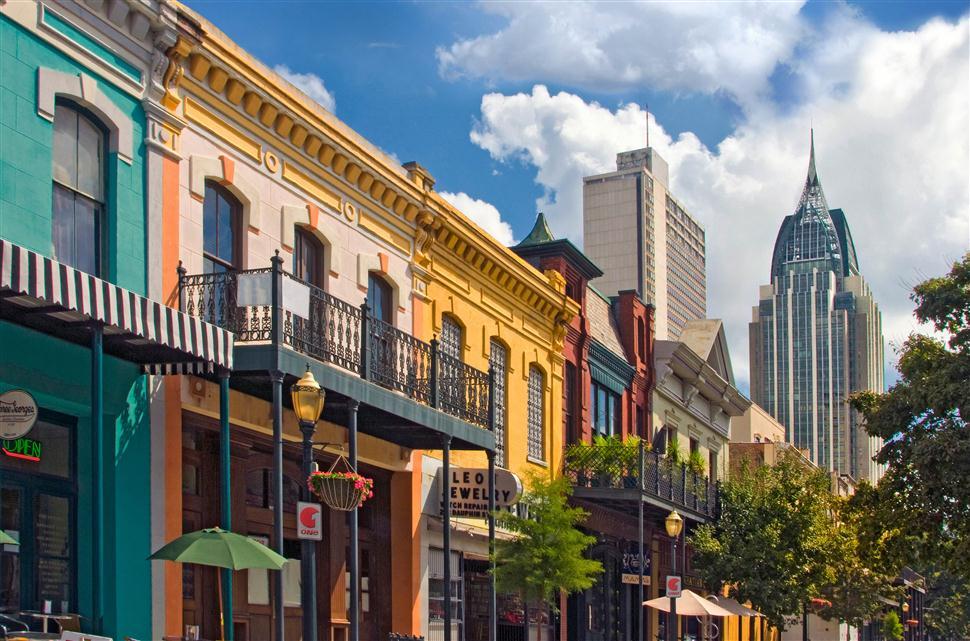Various cities, including Birmingham, are providing a “crane watch” list as commercial developments are taking place at a record pace. Some of the areas benefiting the most are those that, not long ago, were dilapidated, crime-ridden and considered places to avoid. Developers are accustomed to jumping through certain governmental hoops as a necessary evil, so dealing with issues involving zoning, environmental requirements, covenants, and ordinances limiting use, parking and square footage are not uncommon. You can now add graffiti art concerns to the list causing headaches for developers as a federal court in New York imposed liability against a developer to the tune of $6.75 million for painting over graffiti art on his building as part of a renovation project. Moving forward, an issue for developers to consider will include what precautions must be taken if the project involves removing graffiti art.
In the case of Cohen v. G&M Realty, a developer owned several warehouses in a Long Island, New York neighborhood known as Five Points. At the time of purchase, crime in Five Points was constant, and the buildings were largely derelict and decaying. In 2002, the developer brought in a local artist to manage the graffiti art work that was constantly being placed on the buildings. In order to control the amount of graffiti art taking place, the artist organized the graffiti artists and artwork into two categories. The first involved a short-term wall that was ever-changing where graffiti artists could come and decorate at any time. The second involved a more permanent graffiti art installation on walls that was organized by and required approval from the manager. The developers’ site became a major attraction, drawing visitors interested specifically in viewing the artwork. As a result, other businesses began opening around the area, and as the economic climate changed, the developer looked to redevelop his property into luxury condominiums. The redevelopment would have entailed either painting over the walls containing the graffiti art or tearing down the buildings completely.
The manager of the property and artist sued to enjoin the developer from removing their artwork under the Visual Artist Rights Act (“VARA”)[1]. Although not commonly known, VARA amends existing copyright law by providing certain protections to visual art that arise to a recognized stature produced by an artist[2].
Under VARA, if artwork is placed on and made part of a building, and such artwork is of a recognized stature, it may not be destroyed or removed unless previously agreed to in writing or if the artist is provided notice of its impending removal and is provided the right to remove and preserve the artwork.
In Cohen, the Court recognized the dilemma in protecting an individual’s property rights against an artist’s right of protection created under VARA. When the trial court denied the artist’s motion for an injunction to stop the development, the developer elected not to wait on a trial on the merits and painted over the artwork on the buildings. At trial, the Court recognized that the developer acted prematurely and in bad faith, and because the graffiti artwork was determined to be of a recognized stature[3], the artwork therefore was protected by VARA. The Court then found that because the destruction of the artwork was intentional by the developer, and done without notice and without providing an opportunity for the artist to remove and preserve it[4], the Court imposed the enhanced statutory damage penalty of $150,000 per work destroyed and awarded the artists a total of $6.75 million in damages.
Based on VARA’s requirements and the courts’ protection of artistic rights over an individual’s property rights, a developer now needs to add certain tasks to his or her checklist when moving forward with a development that includes graffiti art, specifically:
- Since vagrancy, or marking buildings with unwanted graffiti, is not covered under VARA, landowners (and, as applicable, developers) should include No Trespassing signs on their property and enforce a “No Graffiti” policy on a regular basis;
- Landowners should have a policy of removing unwanted graffiti art on a regular basis;
- If a landowner is permitting graffiti art to be placed upon his or her buildings, a written agreement with each artist should be obtained on the front end allowing the property owner to remove the artwork at any time and at his or her election;
- If graffiti art exists on any building and no agreement was entered into with an artist(s)that allows the art’s removal at the option of the landowner, then notice should be given to the graffiti artists so as to give them 90 days to have the artwork removed by the artist(s) before any destruction takes place; and
- If the property is leased, the lease should include a provision that no graffiti art shall be permitted on any portion of the property without the express written consent from the landowner and an express written waiver from any artist directly to the landowner.
*****************************************************
[1] VARA provides protection to paintings, sculptures, drawings, prints, and still photography.
[2] The Court specifically found that aerosol art (i.e., graffiti art) is covered by VARA.
[3] The court found that the various artists brought in to create the graffiti art on the buildings had impressive followings, commissions, teaching, and social presence.
[4] The Court noted that artwork such as this is able to be removed from buildings and walls.
About Christian & Small LLP
Christian & Small LLP represents a diverse clientele throughout Alabama, the Southeast and the nation with clients ranging from individuals and closely held businesses to Fortune 500 corporations. By matching highly experienced lawyers with specific client needs, Christian & Small develops innovative, effective and efficient solutions for clients. Christian & Small focuses on the areas of litigation and business and is a member of the International Society of Primerus Law Firms and the only Alabama member firm in the Leadership Council on Legal Diversity. Please visit www.csattorneys.com for more information, or contact Jack (jjkubiszyn@csattorneys.com) directly via email.





